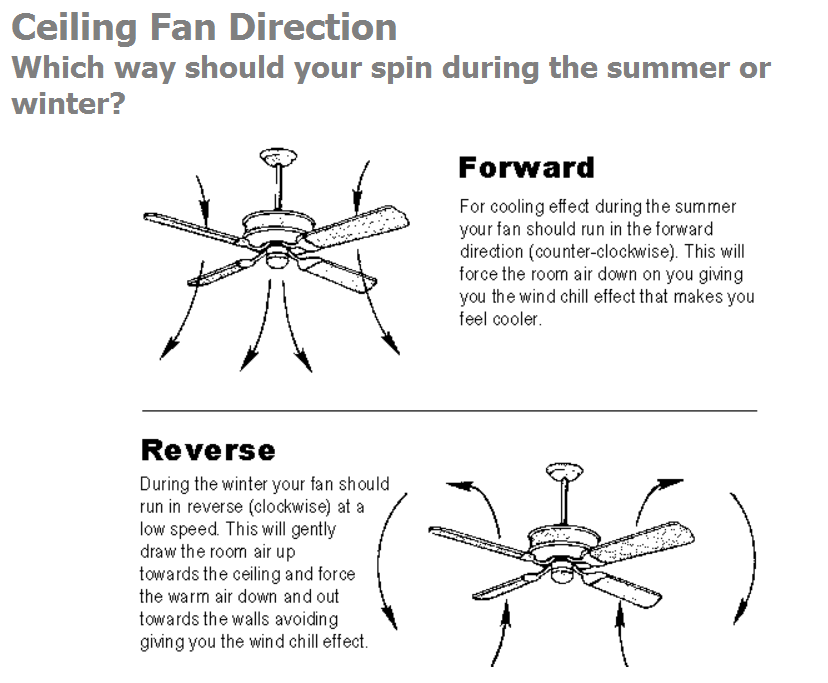When it comes to ensuring comfort in your home, the direction of your ceiling fan plays a vital role. Many homeowners overlook this simple yet effective tool that can significantly impact the ambiance and temperature of a room. Understanding ceiling fan direction is essential for maximizing airflow and achieving energy efficiency throughout the year. Whether you're trying to keep cool in the summer or cozy in the winter, knowing how to adjust your ceiling fan can make all the difference.
The direction of your ceiling fan blades can either create a cooling breeze or circulate warm air, depending on the season. This article will provide insights into how to adjust the ceiling fan direction to suit your needs. With just a few tweaks, you can transform your living space into a comfortable haven that suits any weather condition. Let's dive into the details of this often-overlooked home feature and uncover how to harness its full potential.
In addition to enhancing comfort, the right ceiling fan direction can also help reduce energy costs. By understanding how to operate your ceiling fan effectively, you can save on heating and cooling bills while enjoying a pleasant atmosphere. This guide will answer common questions about ceiling fan direction and provide practical tips for homeowners seeking to optimize their indoor climate.
What is Ceiling Fan Direction?
Ceiling fan direction refers to the rotational movement of the fan blades, which can either push air downward or pull it upward. This directional movement is crucial for creating a comfortable environment in your home. Understanding how to adjust the fan's rotation based on the season is key to optimizing airflow.
How Does Ceiling Fan Direction Affect Airflow?
The direction in which your ceiling fan rotates can significantly influence how air circulates within a room. Here's how it works:
- Counterclockwise Direction: When the fan blades rotate counterclockwise, they create a wind-chill effect by pushing cool air downwards. This is ideal for hot summer months, as it helps lower the perceived temperature in the room.
- Clockwise Direction: In contrast, when the blades rotate clockwise, they draw cooler air upwards and push warm air down. This setting is perfect for winter, as it helps distribute heat more evenly throughout the space.
How to Determine the Right Ceiling Fan Direction for Summer?
In summer, the primary goal is to keep your space as cool as possible. To achieve this, follow these steps:
- Locate the switch on your ceiling fan that changes its direction. This switch is typically found on the fan's motor housing.
- Set the fan to rotate counterclockwise. You should feel a cool breeze blowing downwards.
- Adjust the fan speed according to your preference. Higher speeds will increase the cooling effect.
What About Winter Ceiling Fan Direction?
As the temperatures drop, it's essential to change the fan direction to maintain warmth. Here’s how to adjust your ceiling fan for winter:
- Turn off the fan before changing its direction to prevent any accidents.
- Switch the fan to rotate clockwise. This will pull cooler air upwards and push warm air down to where you need it.
- Keep the fan on a low speed to circulate the warm air without creating a draft.
Are There Benefits to Using Ceiling Fans Year-Round?
Absolutely! Utilizing ceiling fans throughout the year has several advantages:
- Energy Efficiency: Ceiling fans can help reduce reliance on heating and cooling systems, lowering energy bills.
- Improved Air Circulation: Fans promote better air movement, reducing stuffiness and improving indoor air quality.
- Enhanced Comfort: By adjusting the fan direction, you can create a more comfortable living environment no matter the season.
Can Ceiling Fans Help with Humidity Control?
Yes, ceiling fans can assist in managing humidity levels in your home. During humid months, a ceiling fan operating in the counterclockwise direction creates a cooling effect, helping to reduce the perception of humidity in the air. This can make your living space feel more comfortable and less muggy.
What Should You Consider When Choosing a Ceiling Fan?
When selecting a ceiling fan, several factors should be taken into account:
- Room Size: The size of the room will determine the fan blade span you need. Larger rooms may require fans with longer blades.
- Style: Choose a style that complements your home décor, whether modern, traditional, or rustic.
- Energy Efficiency Rating: Look for fans with high energy efficiency ratings to maximize savings on your energy bill.
- Features: Consider fans with remote controls, lighting options, and reversible motors for added convenience.
How to Maintain Your Ceiling Fan for Longevity?
Proper maintenance of your ceiling fan ensures its longevity and performance. Here are some tips:
- Dust the fan blades regularly to maintain airflow efficiency.
- Check the fan's motor and components for wear and tear, ensuring everything is functioning properly.
- Balance the fan blades to prevent wobbling, which can lead to damage over time.
Conclusion
Understanding ceiling fan direction is essential for optimizing comfort and energy efficiency in your home. By adjusting the fan's rotation according to the seasons, you can create an environment that is both pleasant and cost-effective. Whether you're enjoying a cool breeze in the summer or distributing warmth in the winter, mastering ceiling fan direction can transform your living space into a haven of comfort. With simple adjustments and regular maintenance, your ceiling fan can become an invaluable asset in your home’s climate control strategy.
Megan Fox And Her Kids: A Glimpse Into Family Life
Nicholas Chavez: A Rising Star In The Film Industry
The Hidden Gems Of Tacoma Discount World


